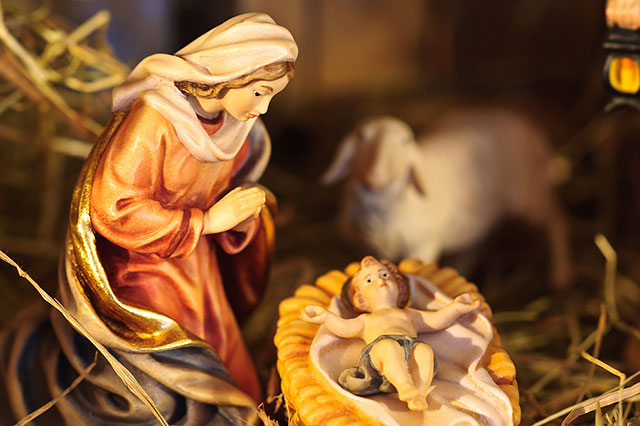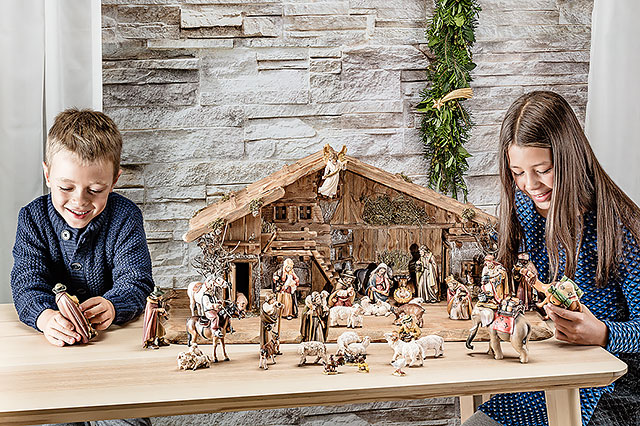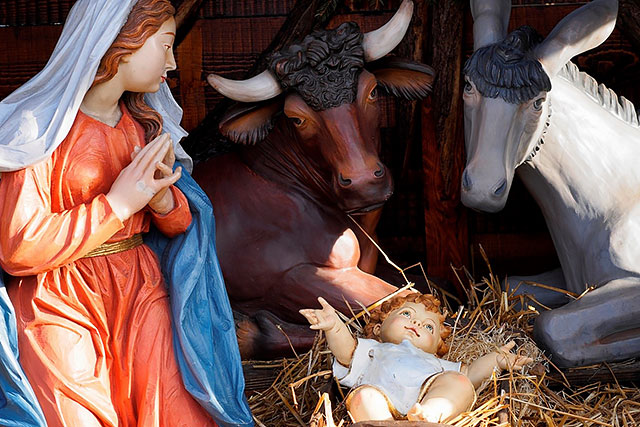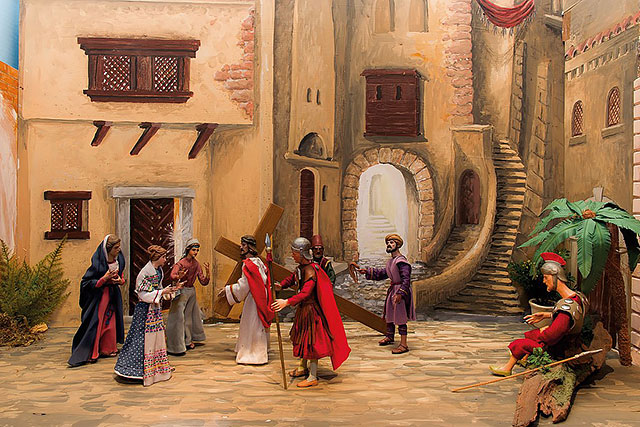If there is no reliable evidence of the historical origin of the Christmas crib, the figurative representation of the Holy Night has manifested itself among Christians around the world for many centuries.

Table of contents
The "birth" of the Christmas crib
During the Christmas period, artistic cribs are set up in churches, houses and apartments, which differ from each other in material and number of characters. At the same time, the importance of nativity figures is undisputed. But where does this custom come from?
The traditional creation of nativity sets is presumably due to St. Francis of Assisi. This is because it can be demonstrated that he recreated for the first time the history of Christmas in 1223 with people and living animals. He chose as a setting a manger in a wood near the monastery of Greccio. He used the vivid scenery to bring believers who did not know how to read the Christmas Gospel of Luke, which presumably dates back to the 2nd century, closer in pictures.
At that time, Francis of Assisi was certainly not aware of laying the foundations for a custom that would last many centuries. But the road that eventually led to today's cribs was still a long one.
The main objective was the interpretation of the Christmas Gospel. Since it was mainly about a child lying in a manger, it was assumed that the newborn child should come from a poor family and therefore from ordinary people. As a result, only the image of Jesus in the manger was often used to represent the Holy Night.
Probably the oldest crib in the world is located in the Sistine Chapel in Rome. In a side aisle of the church of Santa Maria Maggiore there is an altar of 1291 by the sculptor Arnolfo di Cambio, which depicts the Adoration of the The Three Wise Kings: origin, meaning and traditions in alabaster statues.
The first Christmas cribs
In the mid-16th century, Christmas representations began to appear in many Catholic churches throughout Europe. The Jesuits in Prague were the first to hold the position of group leader and in 1562 great attention was paid to information about the crib. In the following decades it was common not only in the large churches in Munich and Innsbruck but also in many small parish churches and chapels to set up a nativity scene at Christmas time. The first written record of a crib set up in 1615 concerns the Benedictine monastery in Salzburg in Nonberg.
In the 17th century the mountain farmers of Val Gardena in South Tyrol began to carve nativity scenes in wood during the winter. They created the Holy Family and added countless wooden and stables to their wooden figures. In this way, Christmas cribs have gradually made their way into many private families, where they still delight collectors of large and small nativity scenes.
Christmas cribs over time
Several times in history, cribs have experienced stormy periods when it was illegal to set up such Christmas scenes. Who would have thought, for example, that Empress Maria Theresa of all people was an opponent of cribs? But in the end all that was achieved was that interest in the crib grew. Nativity scenes entered town houses and farmsteads and became an important craft, especially in South Tyrol's Val Gardena.
While the representation of the cribs was initially limited to the baby Jesus, Mary and Joseph, the ox and the donkey lying in the crib, during the nineteenth century, more and more figures were added. The three wise kings, Chaspar, Melchior and Balthazar, as well as many shepherds and their sheep, appeared. The stables were equipped with a comet star and an announcing angel. In addition, the presentation of the crib has changed and has been adapted to regional conditions. In this way nationalisms were created, the Tirolese Nativity scene, like the Alpine Nativity or the South Tyrol crib.
Today's cribs
Today Christmas decorations can no longer be imagined without cribs. There are traditional and modern cribs of many different materials and designs. Whether natural, enamelled, painted or gilded, each crib has its own magic. No matter if it is a family group consisting of a single piece of wood or a crib with many different wooden figurines.



